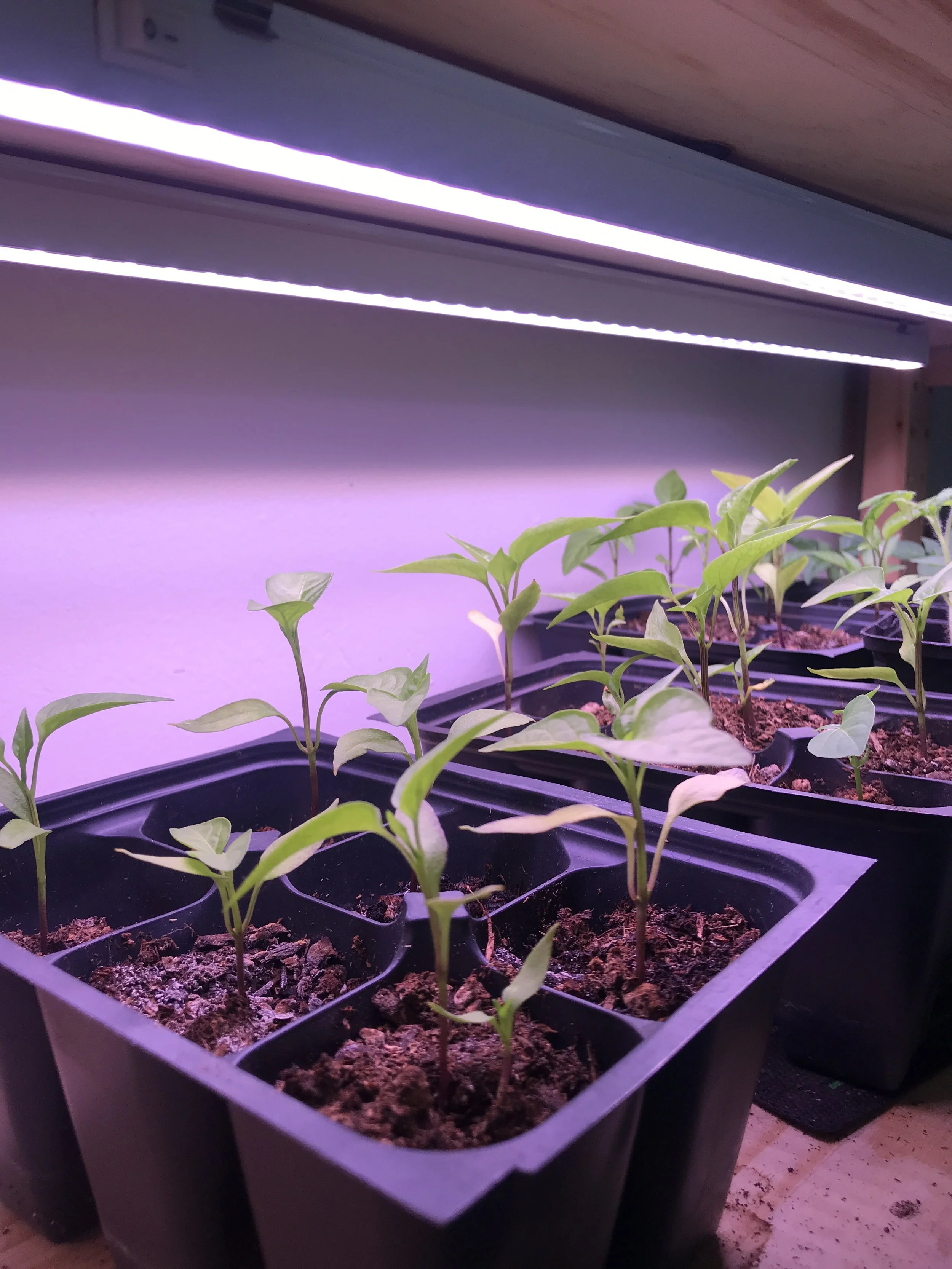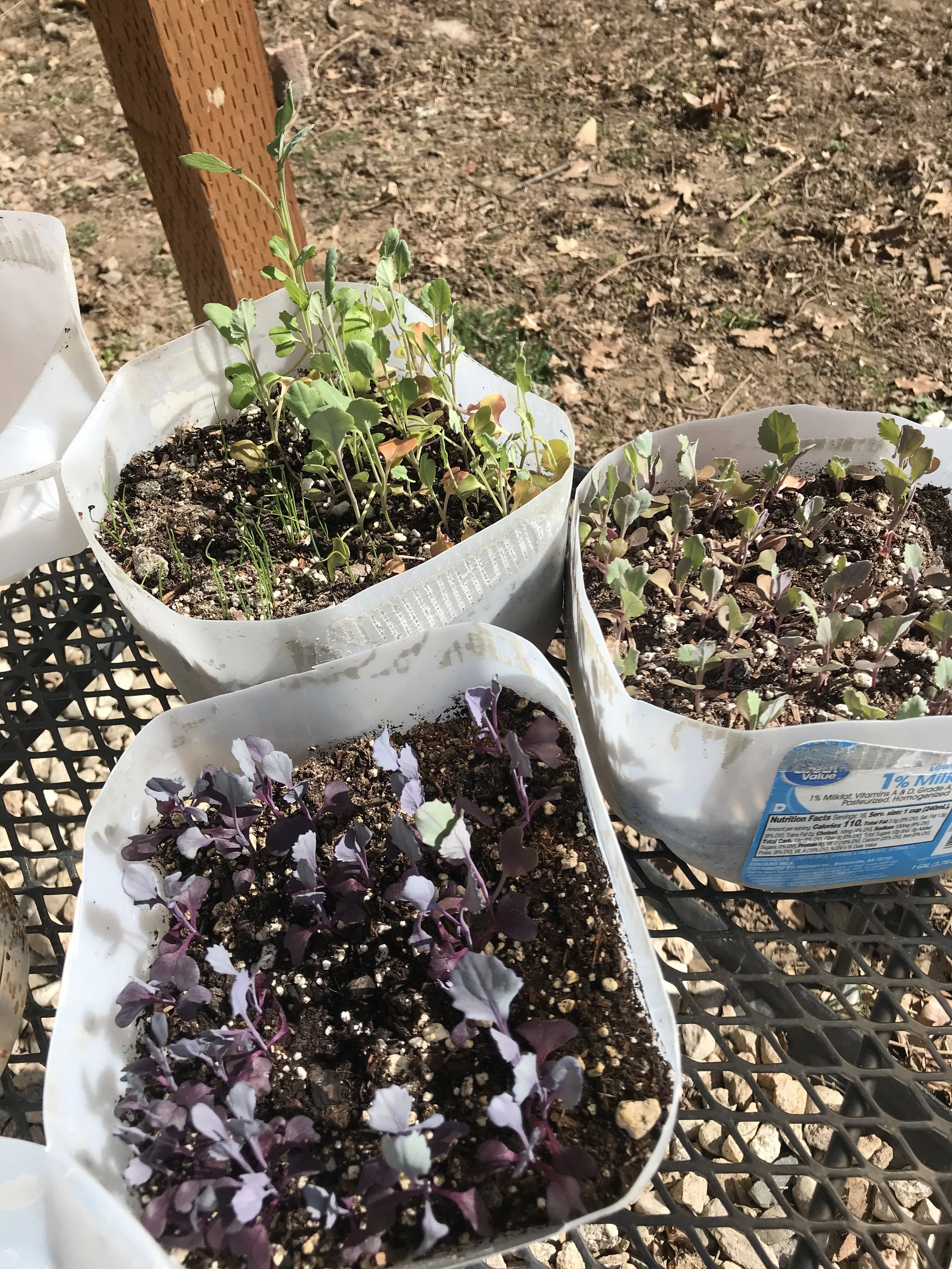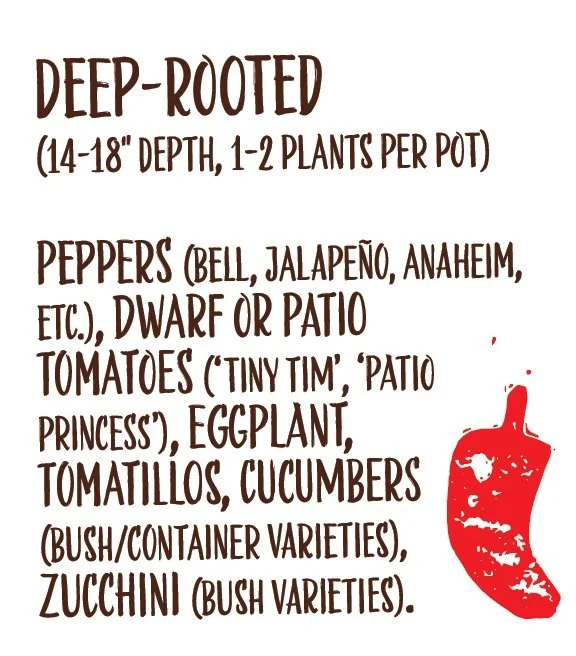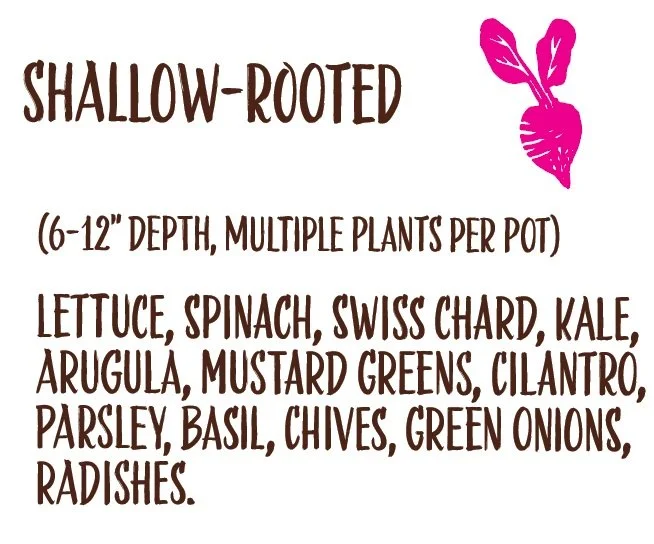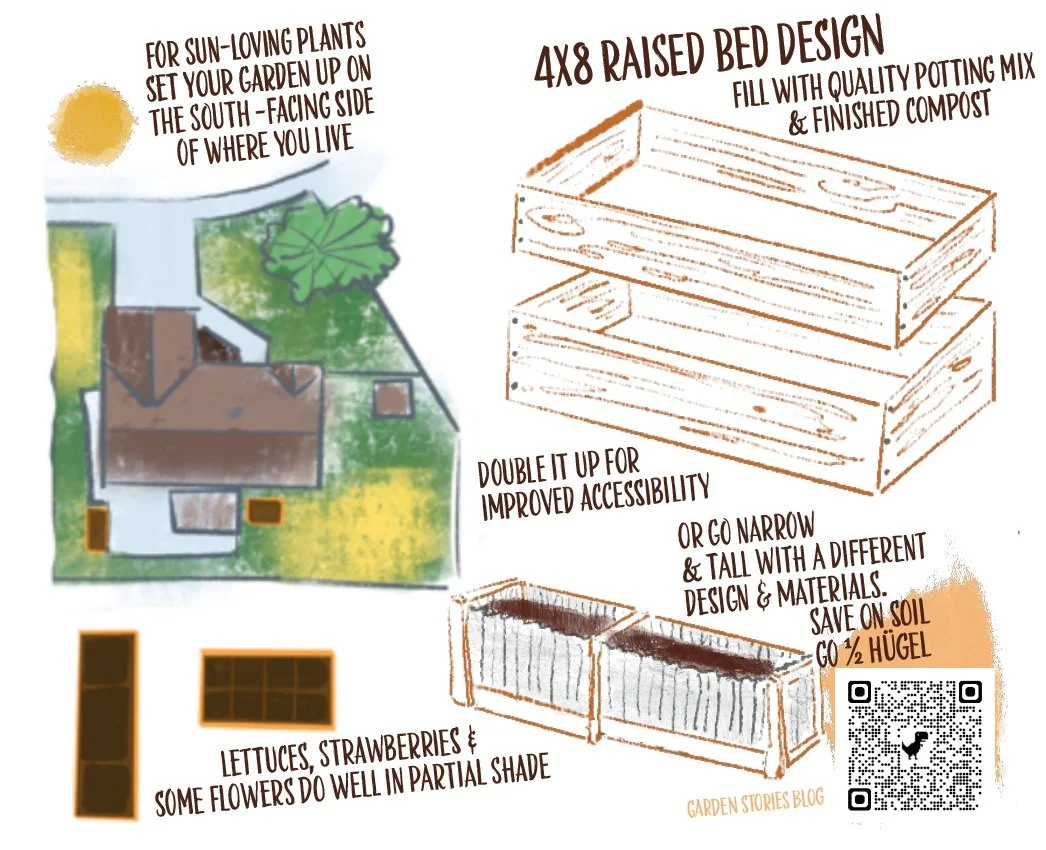You’ve Started Seeds — Now What?
Starting seeds is a powerful act. It’s the spark of intention that connects us to seasons, soil, and sustenance. But once those tiny green shoots break through the soil—then what? This post expands on our zine, offering practical guidance and seasonal wisdom to help you keep growing.
Tending the Transition
You’ve nurtured sprouts in trays, jars—or maybe jugs—watching daily as roots reach and leaves stretch. Now it’s time to support their transition.
🌱 Harden Off Your Seedlings
Before your starts move outside, help them adjust to the world beyond the lit, warmed shelf—or resource-saving winter-sown jug. Begin by placing them outside in a protected spot for a few hours a day, gradually increasing their time outdoors over a week. This step, called "hardening off," helps them build resilience to sun, wind, and temperature shifts.
🪴 Potting Up & Thinning
Some seedlings need more room to grow before heading outside. Potting up into larger containers gives roots space to stretch, especially if you started densely. While it can be hard, thinning your seedlings ensures strong, healthy growth—don’t be afraid to gently remove extras.
💧 Feeding Your Plants
As seedlings grow, they’ll need nutrients. A diluted compost tea or worm casting brew can give them a boost without overwhelming delicate roots. Water from the bottom if possible—or directly down the sides of a winter sowing jug, as moisture is key.
A Note on Winter Sown Pots
Winter sowing has become a tried-and-true method for many growers—especially those working with schools and community projects, like Julia’s well-run workshops this winter with Grace Jordan Elementary.
🥬 From brassicas like kale, collards, cabbage, and broccoli to warm-weather lovers like tomatoes, peppers, basil, melon, cucumbers, beans, and corn—plus lettuce, cilantro, nettles, onions, and a wide range of flowers and herbs—so many plants can be started this way.
🌱 What makes it work:
Each jug becomes a mini greenhouse.
Planting 6–9 seeds per jug allows enough soil for root development, minimizing transplant shock and overall plastic use.
Regular watering is essential—run water directly through the mouth and down the sides of the jug.
If seeds were sown densely (as often happens when using older seed or mixing varieties), and they all germinate—what joy! And also, responsibility.
🌬 To transition these well:
Expose jugs to open air for a day or two. Cover warm-season or tender crops again at night if temperatures drop. Cold-tolerant crops can stay exposed. Make sure everything is well watered. Then begin repotting where needed to give seedlings space.
Whether sown sparsely or thickly, all winter sown starts will need time to adapt before being transplanted. The jug gave them a head start—now it’s time to stretch their roots.
From Balconies to Backyards
Well before your seedlings are ready, you’ll want to decide where they’ll live. Whether you're working with a sunny balcony, a small side yard, or a full backyard, there’s a method that’ll fit your space—and your life. Don’t worry, if you started more than you can plant, it’s a very good year to share seedlings!
Container Gardening (Apartments, Patios, Balconies)
Use deep containers for root veggies and tomatoes, shallow ones for herbs and greens.
Keep things mobile—wheels on larger pots help you chase the sun.
Water often, especially in warm weather. Containers dry out quickly.
Soil matters: choose high-quality potting mix with compost blended in.
🌿 Learn more: University of Idaho Container Gardening or The Spruce's “Vegetable Container Gardening for Beginners.”
Raised Bed Gardening
Great for backyard spaces with compacted or rocky soil.
You control soil quality, depth, and drainage.
Beds can warm faster in spring, extending your season.
Watch for pests that may hide in wood or surrounding grass.
🌿 Explore more: Cooperative Gardens Commission Gardening Guide 101
🌾 In-Ground Gardening
Best if your soil has been improved with compost or cover crops.
Allows deeper rooting and better moisture retention.
Requires more weeding and soil prep but can be scaled up easily.
🌿 Read up: Cooperative Gardens Quick Start Guide or find out How Much Food Can You Grow using this handy tool from the University of Idaho
Reading the Season
There’s no single date that says "plant now,” though we tend to stick to May 10th or whenever the snow is off Schaffer’s Butte. Additionally, we look to the cues around us. The soil warms. The buds swell. Planting isn’t just about following a calendar—it’s about being in relationship with the land.
🕊 Observe and Respond
What are the birds doing? Are insects out? Are your perennials waking up? These clues can guide your planting decisions better than a date on the seed packet.
🌿 Check Your Microclimate
Every yard, patio, or plot has its own rhythms. Pay attention to wind patterns, shade, and how quickly your soil dries. These details help you know where to plant what—and when—and what level of care they’ll need.
If It All Feels Like Too Much…
It’s okay. Gardening is a process, not a performance. The best way to learn is by doing—and by messing up, reflecting, and trying again. Save your notes. Talk to other gardeners. Attend one of our Garden Tours (stay tuned for details) or visit one of the Connected Community Gardens where you can learn more (find this via the navigation at the top of the page or the nav menu if you’re viewing on your phone)! Trade what you have for what you need. Whether you grow one tomato or feed your whole block, you’re part of a greater ecosystem.
🧺 Looking for more?
Print a copy of the zine, and stay tuned for our events, workshops, and pop-up seed exchange opportunities.
Keep growing with us. Share this blog post!
🌻 Have your own tips or a seedling rescue story? Drop it in the comments—we’re all learning from each other.

